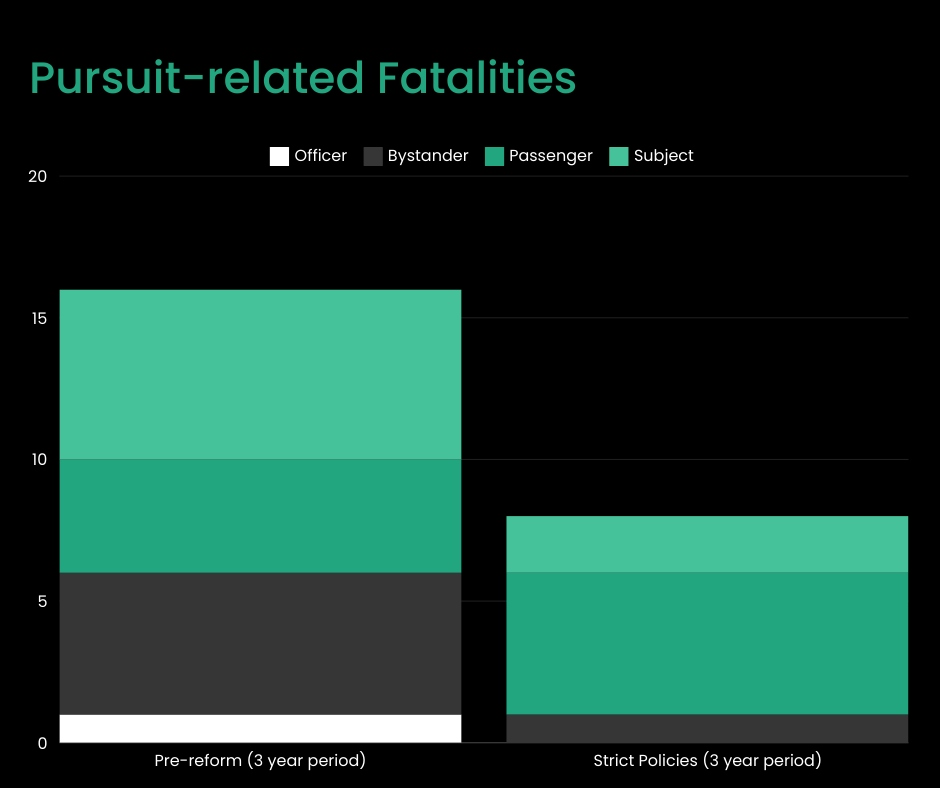Police Pursuits: Facts
The 2024 rollback of restrictions in the state-wide police pursuits policy has caused devastating losses. Since the rollback, police pursuits have claimed the lives of bystanders, officers, and drivers at an unprecedented rate. The statistics are sobering. In the six months since the policy rollback, there have been as many pursuit-related deaths as in the three years in which tighter restrictions prevailed.
Real Consequences
Many of the fatalities were bystanders, completely uninvolved in the incident like a 70-year-old grandmother visiting her kids, or three unhoused people sleeping on the roadside. Even the police themselves are at risk of injury. Often sparked by minor infractions or non-violent offenses, these pursuits are initiated on bases that hardly justify the resulting loss of life, injuries, and other risks.
Restrictions Saved Lives
There was a 50% decline in people killed from accidents during active pursuits while the restrictions were in place. The sensible measures to curb this dangerous practice was working.
Cat and Mouse
State law places the responsibility for pursuit standards with local law enforcement who have the authority to put clear policies in place. Some departments, such as the King County Sheriff’s Office, have already put strong and reasonable policies in place. We need agencies across the state to adopt written policies that their officers can use and their community can see to ensure that every decision in a pursuit considers the broader community's safety. No one should have to bury a loved one because of a pursuit over a traffic stop.
Police Pursuits: Fiction
The root of this issue lies in the law enforcement approach of apprehension at any cost, without regard to collateral damage. Law enforcement officials often rely on unfounded assertions about crime trends to justify pursuits. They seem preoccupied with what could happen instead of what is happening. These same law enforcement officials stoke fear by connecting pursuit restrictions with other crimes like car theft, despite having no concrete data to link the two. Policy decisions should be based on facts, supporting data, and outcomes that provide optimum safety.
FICTION
There is no evidence that society writ large decided to disregard police lights and sirens once pursuit restrictions were enacted.
FICTION
There is no evidence people have begun to mistrust police due to pursuit restrictions.
FICTION
Increases in crime and car theft have not been linked to pursuit restrictions in any way.
FICTION
In the instance referenced above, a pursuit would have been legal under the restricted standards.


